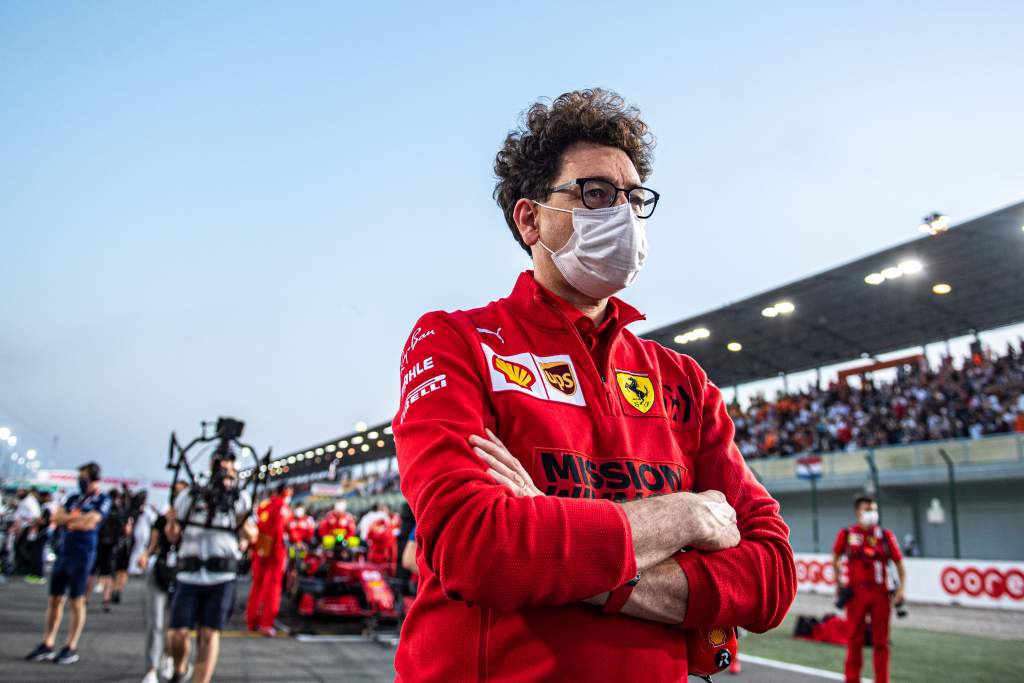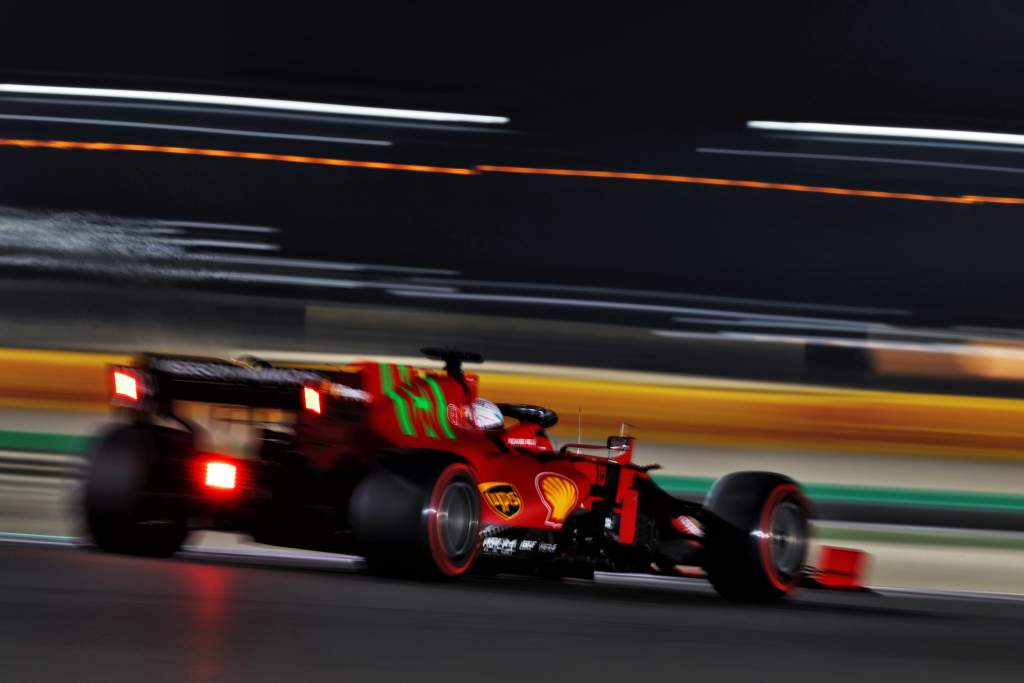Up Next

Ferrari could clinch third place in the Formula 1 constructors’ championship at this weekend’s Saudi Arabian Grand Prix after a season-long fight that sporting director Laurent Mekies has described as proof of its progress in “reconstruction” after a dismal 2020 season.
During the recent F1 triple-header, Ferrari turned a 3.5-point deficit in the battle with McLaren into a 39.5-point advantage. This means it will clinch third this weekend provided it scores at least five points more than McLaren.
After last year’s terrible season (pictured below), finishing sixth in the constructors’ championship with an underperforming power unit package that was the result of a series of technical directives that Ferrari collaborated in framing after the FIA’s suspicions, unproven, that it was running outside of the regulations, team principal Mattia Binotto had set a target of third place as its “minimum objective” for this year. It is now on the brink of securing that.

“We don’t forget where we were last year, so the fact that we have managed to reconstruct to the extent that we can be in that fight today is good testimony on the progress made by the team on that reconstruction,” said Mekies at the start of the recent triple-header.
“We think it is very good training for the team. Hopefully we will be in bigger battles in the future. What it means is we need to be able to be at ease in these battles, to operate under pressure and to perform under pressure. As a team, we take it as a fantastic challenge to get to the next step.”
While turning desperate underachievement this season into a third place that is, realistically, the minimum a team of Ferrari’s size should be achieving is nothing extraordinary given its resources, this is no ordinary season.
Speaking after the recent Qatar Grand Prix, Binotto justifiably pointed out the unusual conditions of 2021 with its carryover cars and restrictions on development – combined with the need to prioritise work on the 2022 car – cast its step forward in a very positive light.

“The championship is not over yet,” said Binotto when asked by The Race about the progress it has made with reconstruction. “There’s two races to go and we are really focusing on trying to be the best in the last two.
“But there’s no doubt that if I look at where we were last year, in sixth, we made the most of what we could do with the current regulations. The car was frozen and very limited by the budget cap in 2021 when we had to put the priority on 2022.
“Overall, I think that the team has made great progress for what was possible to do. For that I am happy because third position is the great output of the effort.”
The most obvious on-track sign of Ferrari’s reconstruction is the power unit performance. The hybrid upgrade is not just about performance this season, but as Binotto has said repeatedly is a key step that will be built on with the all-important 2022 engine package.
That’s so important because the power unit specifications will be frozen during 2022, meaning the performance will be locked in for 2023-2025 prior to the planned introduction of F1’s new engine formula in 2026.

There are also big changes planned for the power unit next season. Ferrari evaluated, and decided against, switching to the split turbo concept pioneered by Mercedes in 2014 and adapted by Honda subsequently – with Renault also switching to it next season. This is because it has found significant gains with combustion technology for what will be an evolution of its current V6.
Ferrari also completed its new driver-in-loop simulator in July. Developed in association with British-based high performance motion simulation specialists Dynisma, this has been playing an active role in 2022 car development and has been described by Ferrari as a “generational leap”.
There have also been a series of restructures at Ferrari over the past 18 months designed to re-establish a team that last won a world championship back in 2008 – when it won the constructors’ title – as the pre-eminent force in F1. This has shored up the way that team works under the de facto technical leadership of Enrico Cardile, who is the head of the chassis group.
This has not only tackled weaknesses within the team, but also reconfigured it to meet the challenges of developing the 2022 car throughout this year as well as responding to the impact of the cost cap.
All of this is encouraging, with Binotto pointing to the effectiveness of the race team as proof of how far it has come.

“Looking at 2022, obviously we are back at the factory working very hard to develop the new car,” said Binotto. “We can only wait and see when we will be back on track in the start of next season.
“If I look at the race team, which is what we can judge, there are things that since the very start of the season have made a lot of progress.
“It has made a lot of progress in terms of strategy, the way we manage, the communication with the drivers, the understanding of what we’re doing. It has improved a lot in terms of management.”
None of this improvement is a guarantee that Ferrari won’t continue to underachieve in 2022. As Binotto indicates, the true test will be how competitive the 2022 car for the all-new technical regulations.
But the progress made by the power unit and the race team trackside is confirmation that it is getting stronger in some areas.
The big question now is whether a team that has underachieved for too long can get back into the fight for regular race wins next season off the back of this reconstruction.





